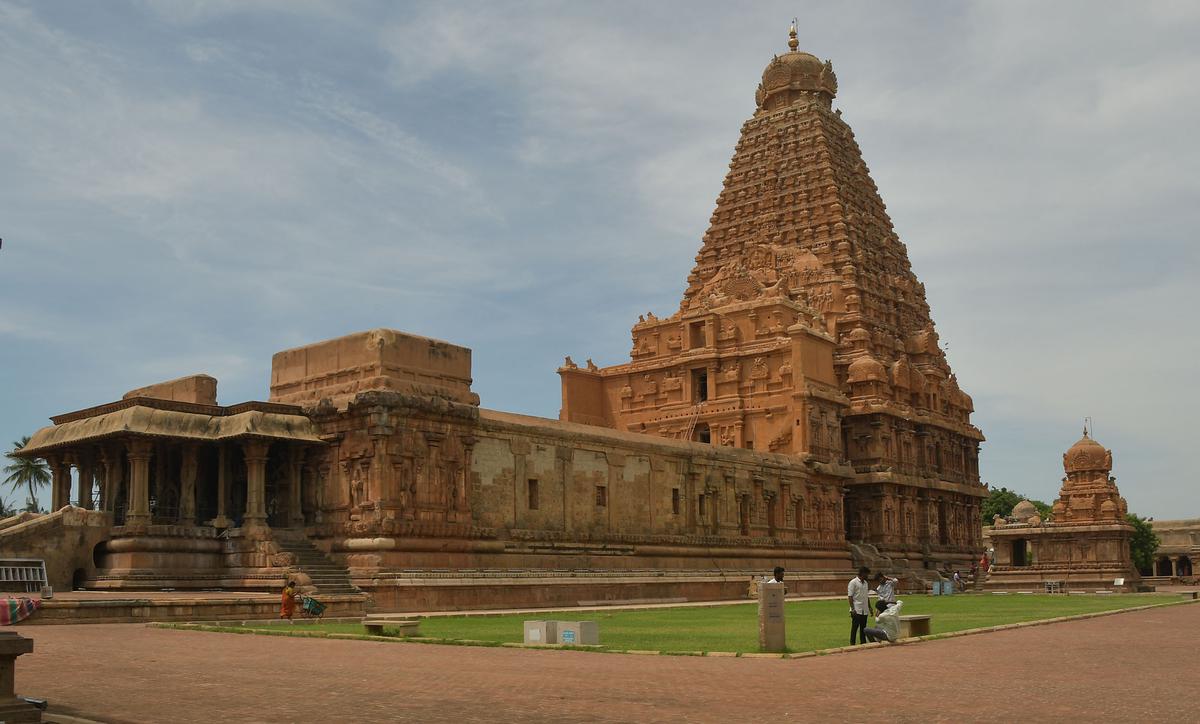
Cholas in focus: 12th century war poem ‘Kalingathu Parani’ celebrates the dynasty’s exploits against the Kalinga kingdom
The Hindu
The poem is narrated by ghosts who are companions of a fearsome goddess called Anangu
In the spirit of competition, the Chodaganga built the current structure of Puri’s Jagannath Temple in the 12th century, to rival the height of the Brihadeeswara Temple in Thanjavur built by Rajaraja Chola in the 11th century. When it was discovered that the masonry was a few feet short, the king ordered a long iron flag pole shaped like a discus to be placed on top, so that Jagannath’s flag would flutter higher.
Like the Tamil people, the people of Kalinga were fiercely independent, and declared their autonomy through their deity, Jagannath, who was an amalgam of Shaiva, Vaishnava, Sakta and tribal practices. Later, the Chodagangas would insist they were mere viceroys of Jagannath, distancing themselves from the practice started by some Chola kings who identified themselves with Shiva.
Kalinga kings were known as Gajapati, as they were masters of elephants. Hundreds of elephants would be used to clear the path of the Kalinga army, and block the progress of enemy soldiers. To outmanoeuvre such a moving wall of pachyderms was no mean feat. Hence, it deserved a parani.
What is interesting about Kalingathu Parani, translated to English by Kausalya Hart, made accessible by Project Madurai, is that the narration is by ghosts. These ghosts are companions of a fearsome goddess, Anangu. She seems similar to the goddess known in Shakta literature as Chamunda, and is traceable to the Vedic goddess Niritti and the Tamil goddess Kotravai. She is linked to dry, hot, barren landscapes and to battlefields wet with blood.
In art, this goddess is shown holding weapons in her hand, surrounded by ghosts, seated on rotting corpses, entertained by carrion crows and wild dogs. The battleground is her sacred space, where she receives blood offered by men aspiring to be heroes.
The poem begins with prayers to many Puranic and Tantrik deities as well as to the Vedas. There is hope that the tiger banner of the Cholas will flutter over other royal banners displaying the boar, the plough, the deer, the lion, the fish and the bow, and inscriptions of Chola conquests carved on Himalayan slopes.
Then come passages describing the yearning and erotic longing of the beautiful wives of warriors — a foreshadowing of the misery of war widows. Then comes description of the goddess, Anangu, her forest, her ghosts, and the temple they built to her with the skull of fallen kings, and bones of animals killed in battle. The goddess, a beloved of Shiva, wears elephant hide, with girdles made of its intestines. Her hand is red with the blood of warriors felled by valiant kings in her honour.

Several principals of government and private schools in Delhi on Tuesday said the Directorate of Education (DoE) circular from a day earlier, directing schools to conduct classes in ‘hybrid’ mode, had caused confusion regarding day-to-day operations as they did not know how many students would return to school from Wednesday and how would teachers instruct in two modes — online and in person — at once. The DoE circular on Monday had also stated that the option to “exercise online mode of education, wherever available, shall vest with the students and their guardians”. Several schoolteachers also expressed confusion regarding the DoE order. A government schoolteacher said he was unsure of how to cope with the resumption of physical classes, given that the order directing government offices to ensure that 50% of the employees work from home is still in place. On Monday, the Commission for Air Quality Management in the National Capital Region and Adjoining Areas (CAQM) had, on the orders of the Supreme Court, directed schools in Delhi-NCR to shift classes to the hybrid mode, following which the DoE had issued the circular. The court had urged the Centre’s pollution watchdog to consider restarting physical classes due to many students missing out on the mid-day meals and lacking the necessary means to attend classes online. The CAQM had, on November 20, asked schools in Delhi-NCR to shift to the online mode of teaching.










